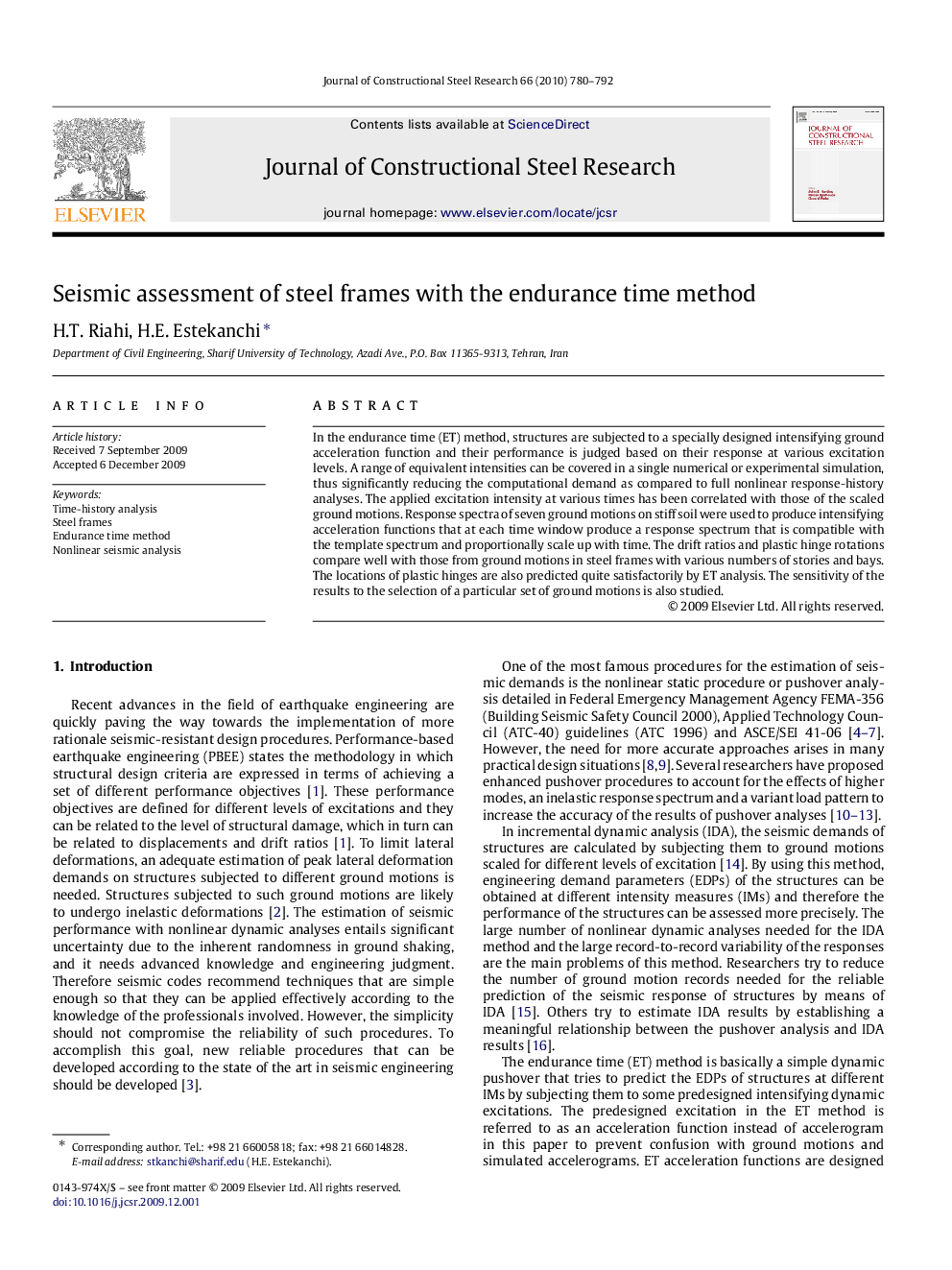| Article ID | Journal | Published Year | Pages | File Type |
|---|---|---|---|---|
| 285901 | Journal of Constructional Steel Research | 2010 | 13 Pages |
In the endurance time (ET) method, structures are subjected to a specially designed intensifying ground acceleration function and their performance is judged based on their response at various excitation levels. A range of equivalent intensities can be covered in a single numerical or experimental simulation, thus significantly reducing the computational demand as compared to full nonlinear response-history analyses. The applied excitation intensity at various times has been correlated with those of the scaled ground motions. Response spectra of seven ground motions on stiff soil were used to produce intensifying acceleration functions that at each time window produce a response spectrum that is compatible with the template spectrum and proportionally scale up with time. The drift ratios and plastic hinge rotations compare well with those from ground motions in steel frames with various numbers of stories and bays. The locations of plastic hinges are also predicted quite satisfactorily by ET analysis. The sensitivity of the results to the selection of a particular set of ground motions is also studied.
